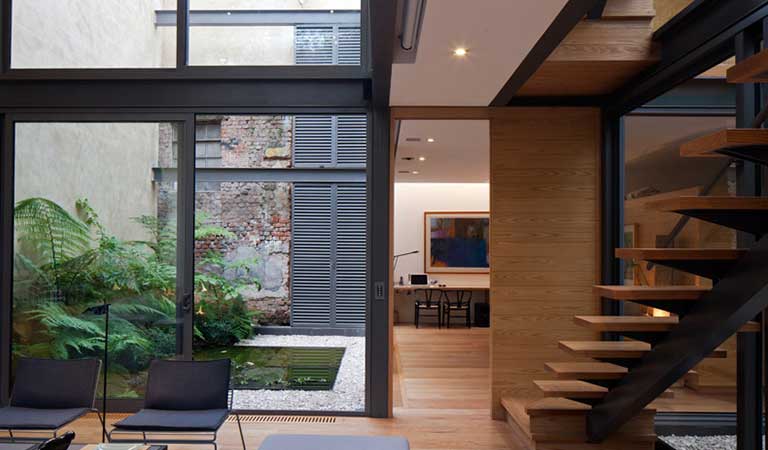Loft Vivero is the result of an architectural intervention of sixty square meters in a more than thirty year old abandoned self-constructed building, located in a plant nursery in Cholul, Yucatán.The construction worked for storage and as a shelter for the workers. It had two modules of the same dimensions and attached to one of them was the bathroom. Because of the growth of a large tree planted by the owner, the original construction started to be structurally affected, so he decided to cut down the tree and abandoned the damaged building.
Since the beginning of the design process, there was a low and limited budget for the project execution that would not be open to consider any additional charges due to renovation's extraordinary situations. Once the construction started, serious structural omissions were detected and, in order to correct them, the project budget was significantly reduced, as well as the renovation actions. Therefor all distribution decisions were taken from the preservation of 90 percent of existing walls and openings.
The architectural program considers the transformation of one of the modules into the house's social area (living room-dining room-kitchen); the second module contains the bedroom, the bathroom, the laundry and storage area, whose access is from the social area. The existing attached bathroom was demolished and instead was created a twenty square meters terrace that works as transitional space between the interior and exterior, and contributes to improve bedroom’s thermal control without sacrificing the views to surrounding vegetation.

Loft Vivero - © Leo Espinosa

Loft Vivero - © Leo Espinosa

Loft Vivero - © Leo Espinosa

Loft Vivero - © Leo Espinosa

Renovation scheme

Ground floor plan
The built environment analysis showed that many of the neighborhood houses windows had extruded frames that help to protect homes from insolation and constant rains. Those frames were reinterpreted with on-site precast concrete plates that not only have protective characteristics, but also emphasize landscapes that surround the house, as if they were living paintings.The original construction had mosaic tile floors that had to be taken out completely in order to introduce new installations. The recovered pieces were used for the new design of the floors, which were integrated to polished concrete plates that replaced the area of lost mosaic tiles.

Loft Vivero - © Leo Espinosa

Loft Vivero - © Leo Espinosa

Loft Vivero - © Leo Espinosa

Loft Vivero - © Leo Espinosa

Loft Vivero - © Leo Espinosa
In order to reduce maintenance cost, two apparent stuccos were specified on exterior walls; one made with the earth that covers the more than 20,000 square meters of the plant nursery; and a polished brilliant cement based one that brings a subtle reflection of natural environment. Both finishes were applied by hand and made a contrast with the colored film laminated glass slots, in the same color range of the environment, with the intention of coloring the light that passes through them.

Loft Vivero - © Leo Espinosa

Loft Vivero - © Leo Espinosa

Loft Vivero - © Leo Espinosa

Loft Vivero - © Leo Espinosa

Loft Vivero - © Leo Espinosa



















